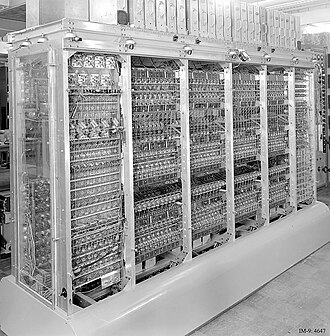 “The Maniac” is a strange an delightful little work of fiction because it deludes you into thinking it is a non-fiction work that describes the life of John vonNeumann through a series of essays by friends, associates, wives, and children.
“The Maniac” is a strange an delightful little work of fiction because it deludes you into thinking it is a non-fiction work that describes the life of John vonNeumann through a series of essays by friends, associates, wives, and children.
And it is convincing! I was half-way through before me curiosity led me to the back of the book where there is an untitled page with text that begins with the following words: This book is a work of fiction based on fact.
 You see, the stories are real – well, mostly real – and, for the most part, well told that is if you can deal with fiction made to read like Hungarian translated to English with all the goofy English that entails. Some are “written” by the American friends vonNeumann acquired when he came here to work on the atomic bomb and later on the hydrogen bomb that are easier to read.
You see, the stories are real – well, mostly real – and, for the most part, well told that is if you can deal with fiction made to read like Hungarian translated to English with all the goofy English that entails. Some are “written” by the American friends vonNeumann acquired when he came here to work on the atomic bomb and later on the hydrogen bomb that are easier to read.
vonNeumann was a masterful mathematician, a genius in fact, who created the computing machines that made the bomb projects successful. He did more as he was a polymath who created many of the scientific ideas that went into these projects, and more.

But he is best remembered for inventing the computer, or at least the basis for modern computers. Using the stored program proposals of Alan Turing, he built his first computer at the University of Pennsylvania. Called the ENIAC (Electronic Numerical Integrator and Computer), it was ten feet high and one hundred feet long . . . and an Apple watch has more computing power.
The second was the MANIAC (Mathematical Analyzer Numerical Integrator and Automatic Computer) for which this book is named. Three versions were built but vonNeumann only lived to see the first.

The book takes you through arguments among competitive programmers which are interesting and occasionally funny, and then takes you into vonNeumann’s dying moments brought on in his early fifties by excessive exposure to radiation during development of the atomic bomb at Los Alamos.
His mind was active right until the very end of his life as he kept proposing new ideas for new machines and new mathematical structures such as game theory. He just could not stop his creative mind.
The last seventy-five or so pages of the book are a discussion of Chess and Gary Kasparov’s encounter with IBM’s Deep Blue computer and Go and Lee Sedol’s encounter with the AlphaGo computer. This was supposed to be a discussion of Artificial Intelligence, but it was not, and I found this section of the book to be disconnected and uninteresting.
The rest of the book was interesting, and fun to read.
As your blogs usually are this is a thoughtful, informative and well written piece. I was familiar with von Neumann as the father (with Oskar Morgenstern) of the Theory of Games, but did not know of his involvement with the atomic bomb and early computers.
Always a good read Mr. D. You make everything sound interesting. (Except the last 75 pages of this one. Lol).